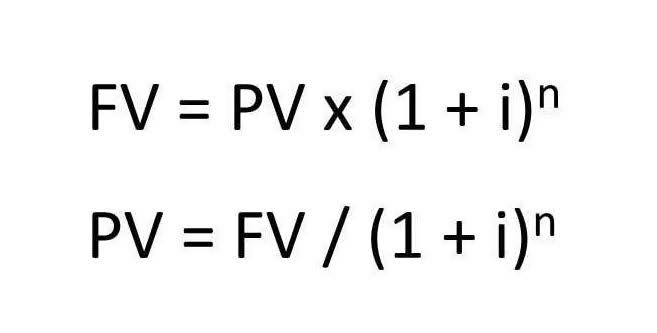
This meant they would review statements to make sure they aligned with GAAP principles, assumptions, and concepts, among other things. At this point, the accounting cycle is complete, and the company can begin a new cycle in the next period. In essence, the company’s business is always in operation, while the accounting cycle utilizes the cutoff of month-end to provide financial information to assist and review the operations. At this point, the accounting cycle is complete, and the companycan begin a new cycle in the next period. In essence, the company’sbusiness is always in operation, while the accounting cycleutilizes the cutoff of month-end to provide financial informationto assist and review the operations.
What Is a Trial Balance? Everything You Need to Know (2024) – Shopify
What Is a Trial Balance? Everything You Need to Know ( .
Posted: Wed, 12 Jul 2023 07:00:00 GMT [source]
For example, Cash has a final balance of $24,800 on the debit side. This balance is transferred to the Cash account in the debit column on the unadjusted trial balance. Accounts Payable ($500), Unearned Revenue ($4,000), Common Stock ($20,000) and Service Revenue ($9,500) all have credit final balances in their T-accounts. These credit balances would transfer to the credit column on the unadjusted trial balance. The purpose of closing entries is to close all temporary accounts and adjust the balances of real accounts such as owner’s capital.
Example of Post-closing Trial Balance
Treat the income statement and balance sheet columns like a double-entry accounting system, where if you have a debit on the income statement side, you must have a credit equaling the same amount on the credit side. In this case we added a debit of $4,665 to the income statement column. This means we must add a credit of $4,665 to the balance sheet column. Once we add the $4,665 to the credit side of the balance sheet column, the two columns equal $30,140.

Once the trial balance information is on the worksheet, the next step is to fill in the adjusting information from the posted adjusted journal entries. Presentation differences are most noticeable between the two forms of GAAP in the Balance Sheet. Under US GAAP there is no specific requirement on how accounts should be presented. IFRS requires that accounts be classified into current and noncurrent categories for both assets and liabilities, but no specific presentation format is required. Thus, for US companies, the first category always seen on a Balance Sheet is Current Assets, and the first account balance reported is cash. The accounts of a Balance Sheet using IFRS might appear as shown here.
An example of a post-closing trial balance
Note that for this step, we are considering our trial balance to be unadjusted. The unadjusted trial balance in this section includes accounts before they have been adjusted. As you see in step 6 of the accounting cycle, we create another trial balance that is adjusted (see The Adjustment Process). Running a trial balance is a must for anyone manually recording financial transactions since it helps to make sure that debits and credits are in balance — which is the core principle of double-entry accounting. Once your adjusted trial balance has been completed, you’re ready to record post-closing entries for the month. Notice that this trial balance looks almost exactly like the Paul’s balance sheet except in trial balance format.
- Typically, the heading consists of three lines containing the company name, name of the trial balance, and date of the reporting period.
- At this point, the accounting cycle is complete, and the companycan begin a new cycle in the next period.
- If you check the adjusted trial balance for Printing Plus, you will see the same equal balance is present.
- Once all balances are transferred to the unadjusted trial balance, we will sum each of the debit and credit columns.
- The statement of retained earnings is prepared before the balance sheet because the ending retained earnings amount is a required element of the balance sheet.
- The purpose of closing entries is to close all temporary accounts and adjust the balances of real accounts such as owner’s capital.
- Reversing entries reverse an adjusting entry made in a prior period at the start of a new period.
There is actually a very good reason we put dividends in the balance sheet columns. At the bottom of the debit balance and credit balance columns will be a total for each. When accounting software is used, the totals should always be identical. Next will be a listing of all of the general ledger balance sheet accounts (except those with $0.00 balances) along with each account’s balance appearing in the appropriate debit or credit column. A post-closing trial balance is a trial balance which is prepared after all of the temporary accounts in the general ledger have been closed.
Why the Post-Closing Trial Balance Is so Important for Your Business
The post-closing trial balance is the last step in the accounting cycle. It is prepared after all of that period’s business transactions have been posted to the post-closing trial balance helps to verify that the General Ledger via journal entries. The post-closing trial balance can only be prepared after each closing entry has been posted to the General Ledger.
This website covers a variety ofaccounting topics including financial accounting basics, accountingprinciples, the accounting cycle, and financial statements, alltopics introduced in the early part of this course. The post-closing trial balance for Printing Plus is shown inFigure 5.8. Income Summary is then closed to the capital account as shown in the third closing entry. There are three main types of trial balance reports that you can run, with each trial balance run during a specific part of the accounting cycle. Concepts Statements give the Financial Accounting Standards Board (FASB) a guide to creating accounting principles and consider the limitations of financial statement reporting. For example, Celadon Group misreported revenues over the span of three years and elevated earnings during those years.
Recent Comments